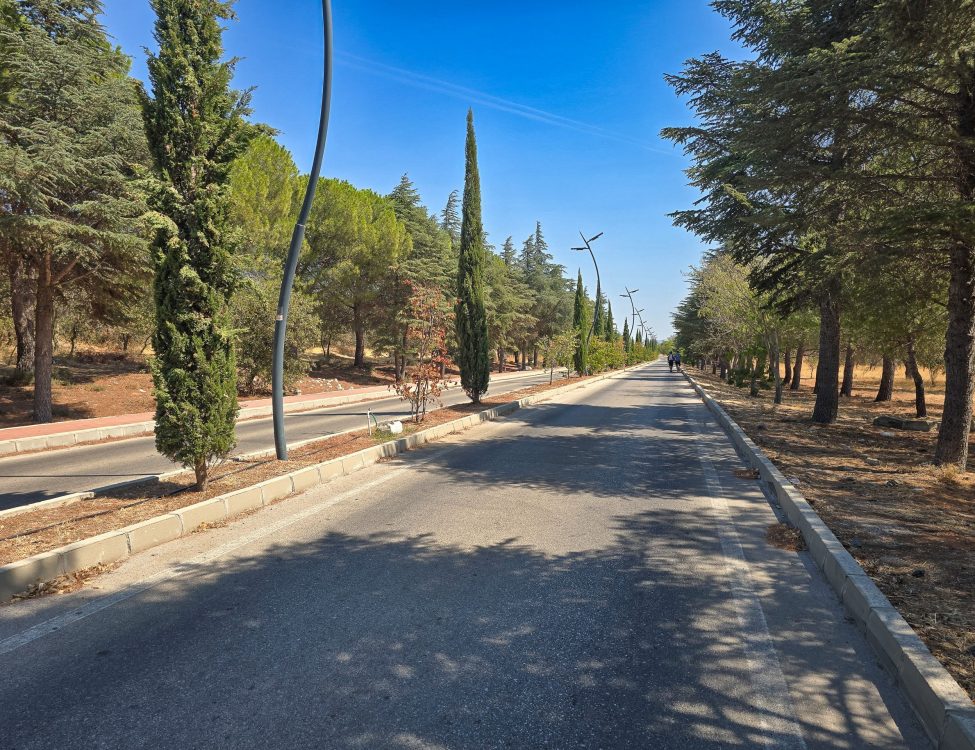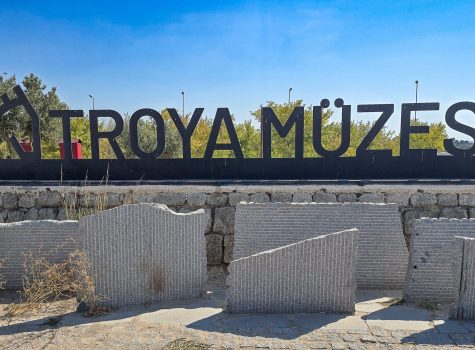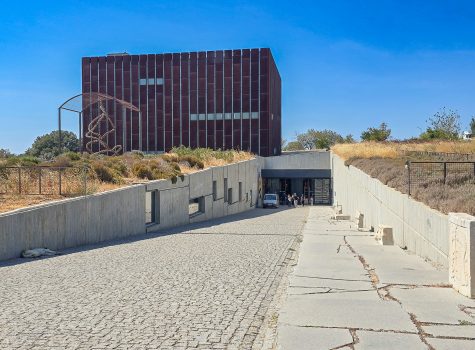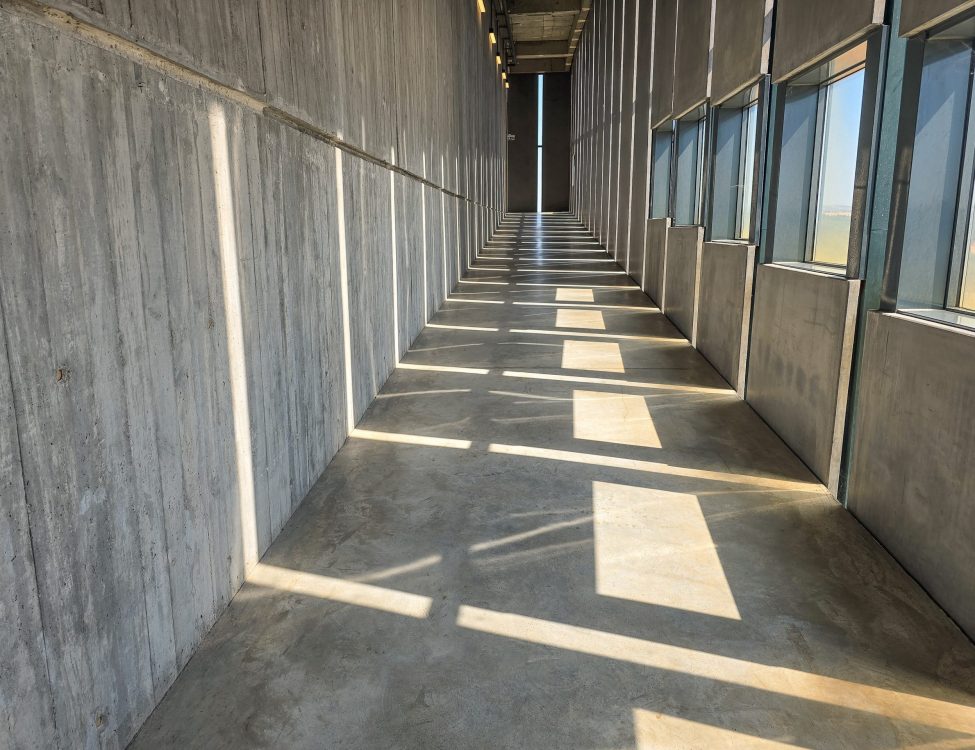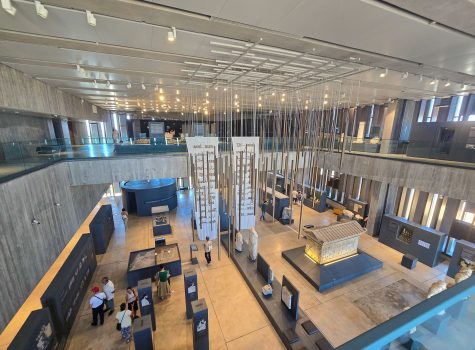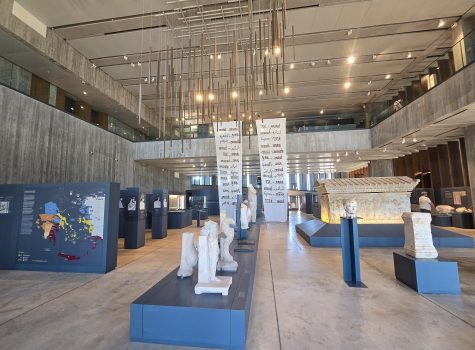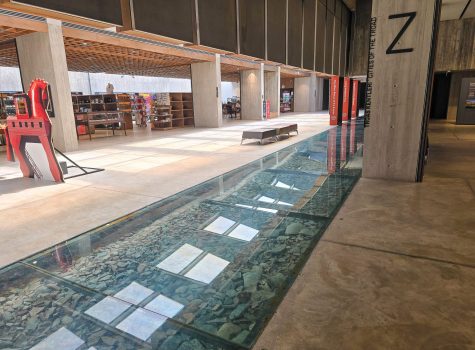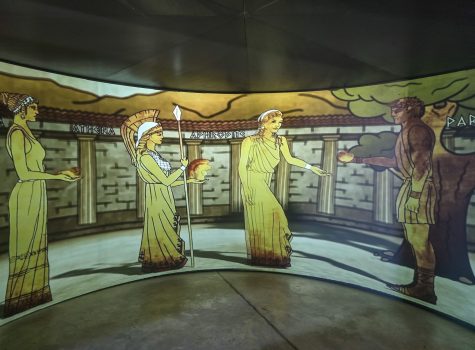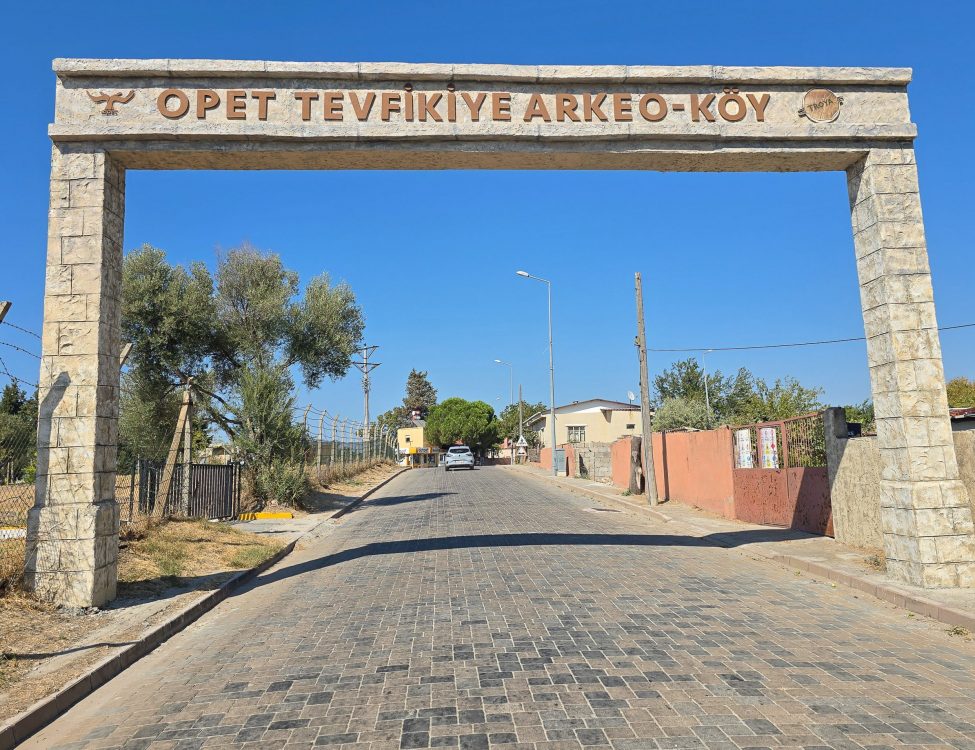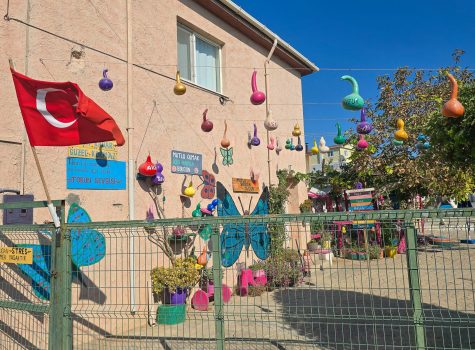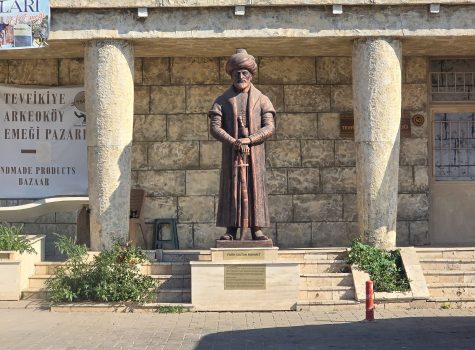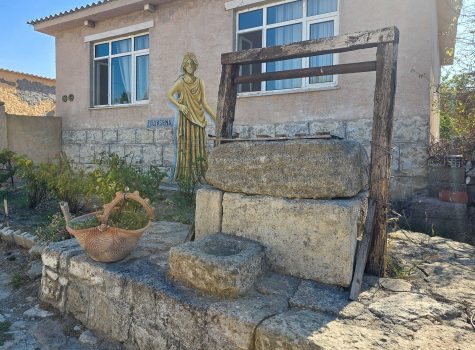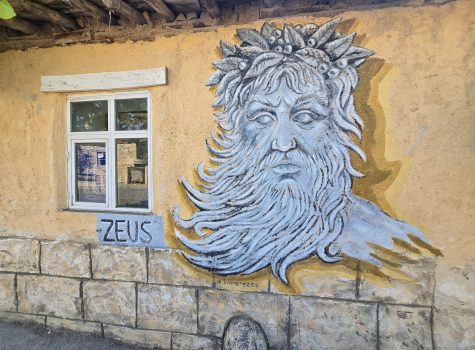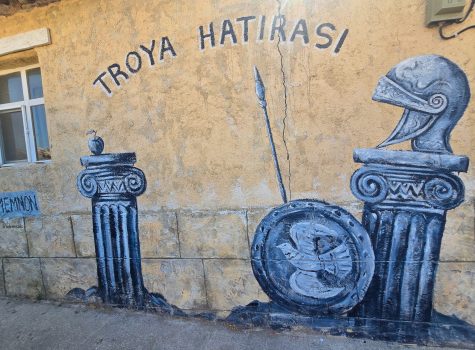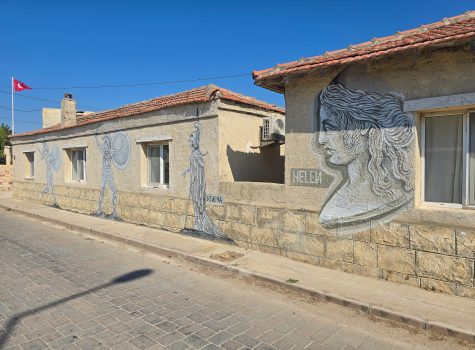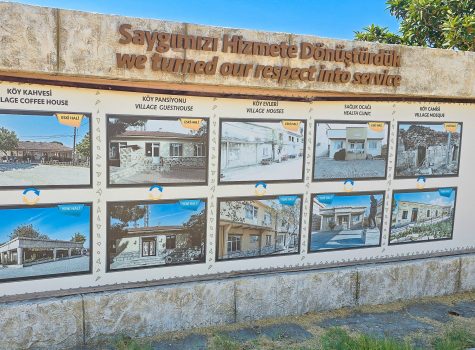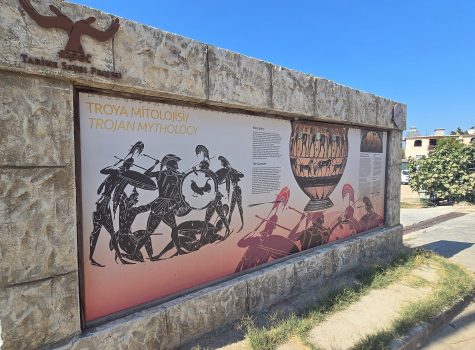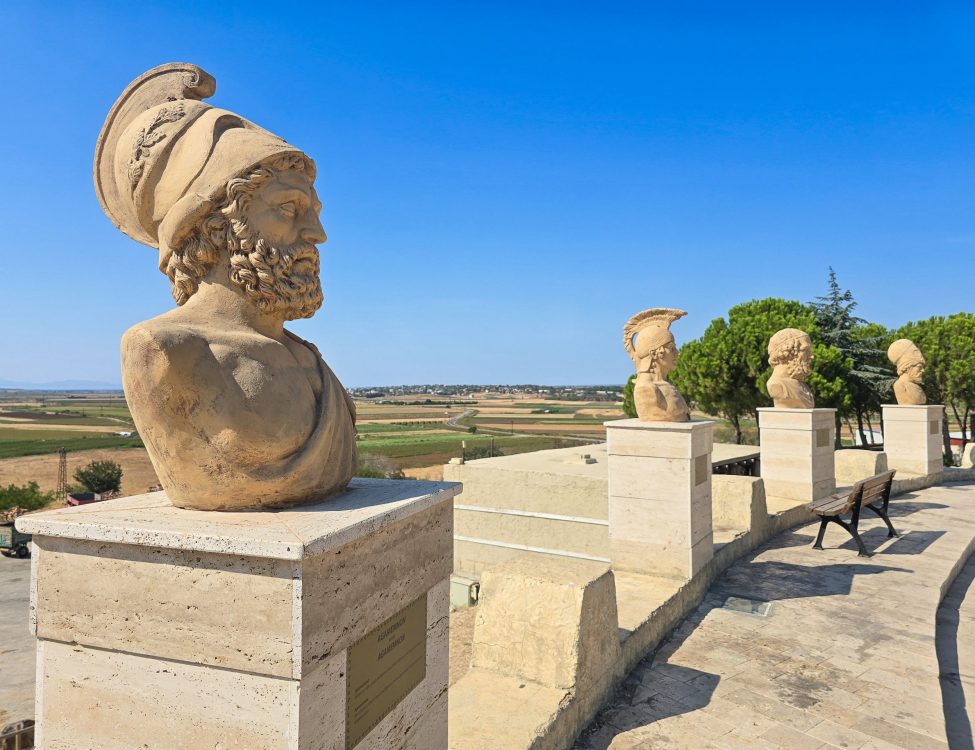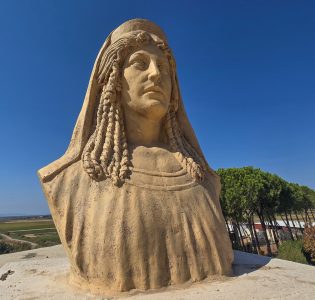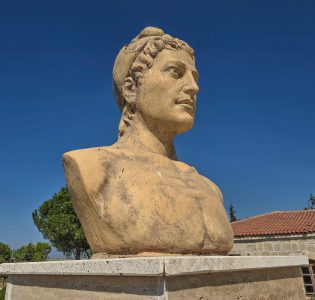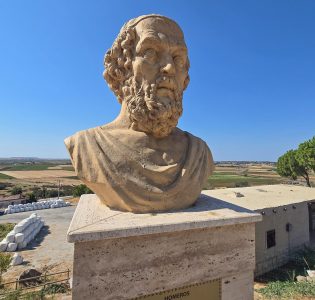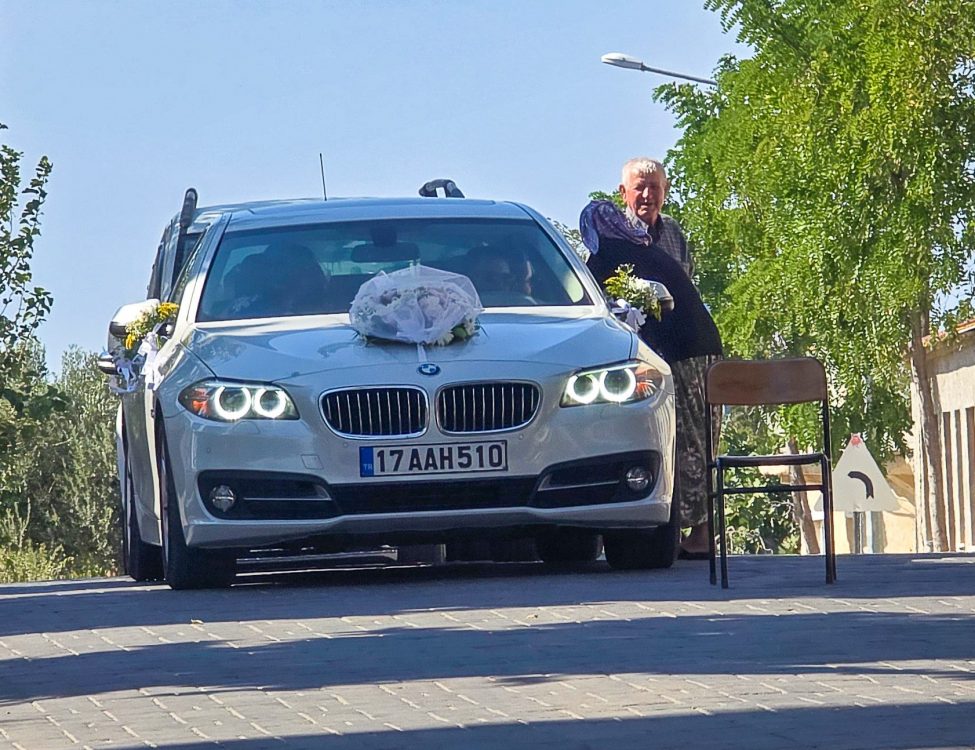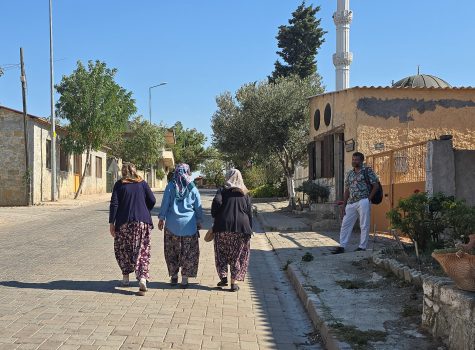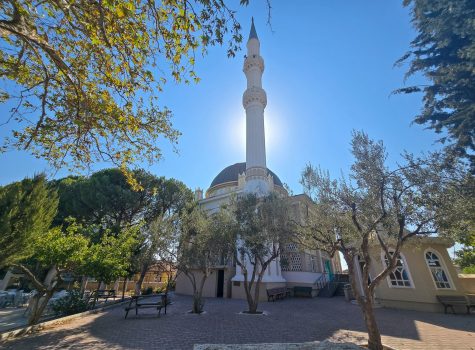Beyond the Trojan Horse – A Visit to Ancient Troy Part 2
After the ancient walls of Troy and sprawling plains, we turned our attention to the Troy Museum, a modern space that promised to bring the stories of this legendary city to life. It’s a short walk – just 800 metres through an avenue of pine trees and a central reservation dotted with Italian Cyprus, all offering some much-needed shade.
The approach to the entrance took us along a path lined with archaeological artefacts such as sculpted stone sarcophagi. In front of us, the museum building emerges from the ground as a large cube clad in a shell of rusting Corten, like an undiscovered artefact slowly revealing itself from the earth. The striking oxidised appearance blends seamlessly with the ochres and russets of the surrounding plain.
A stone ramp led us down towards the entrance and into a subterranean level, giving the sense of being submerged in another world. The symbolism of this wasn’t lost on us.
The contrast between the museum and the archaeological site couldn’t be more stark. The interior is deliberately minimalist and industrial with exposed concrete walls and steel joists. Large ramps wrap around the outer walls linking one level to the other. As visitors progress from one floor to the other, daylight streams in via large expanses of glazing, casting geometric shadows across the walkway. The walls along the walkway contain niches, housing a collection of exhibits that tease you about what to expect on the next level. The minimal design is not only a thing of beauty, but also aims to keep the focus on the artefacts themselves.
The museum is built on 4 levels culminating in a roof terrace offering visitors a view over the plains to Ancient Troy, though I was in no hurry to put myself through any vertigo-inducing experience today. The museum is structured chronologically and beautifully curated. We were immediately struck by the sheer scale of the collections. Here were artefacts spanning from the earliest settlements at Troy I through to the Roman layers, each carefully catalogued and displayed in cases.
What I particularly loved was how the museum didn’t just present objects as isolated artefacts. Multimedia displays, scaled reconstructions, and 3D models allowed visitors to imagine entire houses, palaces, and city walls. For instance, a digital reconstruction of the Megaron brought the burnt ruins we had walked past into reality, showing how it would have looked with its plastered walls, whitewashed floors, and a hearth.
And then there were the treasures, exquisitely crafted jewellery, finely painted ceramics, and ceremonial weapons, all from various strata of Troy’s long history. These objects gave us an insight into the lives of an ancient civilisation and how, through trade and cultural exchange, this small mound in north-western Anatolia was connected to the wider Mediterranean world. A most worthy visit and one that we were able to do at our own pace. You could dedicate at least half a day to the museum alone.
Just a 10-minute walk from the museum is the village of Tevfikiye and its Archeo-Village Project. Tevfikiye is a small village with just over 400 residents whose livelihoods are bound up in agriculture. As the archaeological site and museum became significant destinations on the tourist map, the residents felt that they should benefit from the economic uplift that had been brought to the area. This really piqued my interest, as before I changed careers to the travel industry, my background was in economic development!
OPET, one of Turkey’s largest petrochemical companies, identified this as a candidate for their sustainability and social impact programme and was the sole private sponsor. This partnership project began to take shape in late 2017 with the Governorate of Canakkale, various educational and creative institutions and a committee of residents. The first step was to survey the residents and identify their ambitions, both personal and for the community. The findings showed that they wanted more developmental opportunities, including jobs and increased skills. Being so close to the Ancient Troy sites, they saw potential to offer complementary tourist facilities to visitors whilst also benefiting economically.
The project included improved physical infrastructure. The roads were upgraded, and signage was placed at the entrance to the village. Some buildings were renovated or repurposed to have a Troy-themed aesthetic with façades painted with images to represent the Troy spirit. The village mosque (originally built with stones taken from the Troy mound) was restored using stones in keeping with the Troy era look. The physical regeneration of the village was finalised with the planting of thousands of trees such as acacia, cypress and oleander, making the place welcoming and pleasant to walk around.
For the residents, training was provided via courses on hospitality and hygiene, artisan crafts, English and rural tourism. This was the foundation for many to create new tourist businesses such as cafes, tourist shops selling arts and crafts and small hotels that we see here today.
As you walk around the village, you will see information hoardings showing the before and after or the ‘eski’ and the ‘yeni’ of the village’s regeneration. You can also follow a trail of pictograms laying out the story of the Trojan War – the mythological version that is, after all, it’s those stories of Paris and Helen that pull us in!
Another point of interest was the heroes’ gallery in Troy Square, an observation point built on a vantage point overlooking the Trojan plains. Here you can tip your hat to heroes of the Trojan legend from King Priam, Odysseus, Achilles and Ajax, to Helen, Paris and Homer. More than anything, you get spectacular views of the expanse of golden fields that stretches toward the Dardanelles. It’s absolutely breathtaking!
Whilst meandering around the streets, we noticed the local Imam walking from the mosque to a side street with what looked like a ghetto blaster in his hand. Shortly after, we heard a familiar sound of blaring horns indicating that a wedding was afoot. Just above the rise in the road came a cavalcade of cars adorned with flowers and ribbons. What we witnessed next was rather peculiar. Just ahead of us, an elderly woman stepped out of her doorway, carrying a simple wooden chair. Without hurry, without drama, she placed it directly in the middle of the road and sat down. The lead car braked, and someone leaned out of a window, waving a banknote. The lady rose from her chair and walked to the driver’s window, where she had a brief conversation before accepting the note. Only then did she lift the chair and step aside, allowing the procession to continue with a renewed round of horn-honking.
We later learned this was a local wedding tradition known as “yol kesme” or road stopping. It’s a traditional custom played out in villages across Turkey. It acknowledges that as the bride passes from one household to another, respect must be shown to those who guard the thresholds of village life. It reminded us that life here is very much lived and not just something to be observed.
As the afternoon drew on, we stopped for refreshments at a traditional tea house called Köy Kahvesi. The garden had views across the agricultural plains. I couldn’t help but reflect on the people who had farmed this land for thousands of years and shaped it into the landscape we see today through nothing but hard graft. Hopefully, the Archeo-Village project will provide the community with the means to live comfortably for decades to come.

